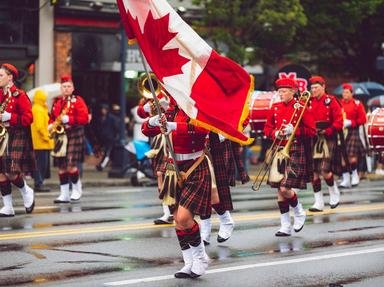Quiz Answer Key and Fun Facts
1. In Nova Scotia in 1946, this woman of colour refused to leave a whites only section of a movie theatre and was jailed for it. She did not 'bow' to the pressure, and her actions led to the end of segregation in the province.
2. Became the first female Alderman in the British Empire when elected to the Calgary City Council in 1917. You could say she 'blew' away the competition.
3. She spent two decades lobbying against the law that disallowed First Nations women to retain their Status when marrying a non-Aboriginal. Eventually, she 'cut' through the government red tape, successfully having the law repealed in 1985.
4. If she'd 'had children', they would have been proud of this union organizer and social activist who spent a lifetime fighting for the working class, women, and minorities in Quebec. And she was a founding member of the National Action Committee on The Status of Women in 1972.
5. 'Happily', she championed higher education for women in addition to advocating a francophone women's organization that championed education, equity under the law, and a woman's right to vote.
6. She was the first woman to be elected to the House of Commons, acting as the Member of Parliament from the Ontario riding of Grey Southeast in 1921. 'Fail', she did not, holding office until 1935.
7. You can't 'cover up' what this woman accomplished. She championed education reform for women and helped found the Women's Institute, the National Council of Women, the Victorian Order of Nurses, and the national YWCA.
8. She 'held on' to her beliefs as a suffragist and was instrumental in Manitoba becoming the first province to grant women the vote in 1916. As one of the Famous Five, she saw to it that women were recognized as Persons (as defined in the British North America Act).
9. She entered the 'field' of politics after leading the women's suffrage movement in Quebec, going on to become the first woman to lead a political party in 1951.
10. You could say this woman had 'drive'! After studying art in San Francisco, London and Paris, she returned to British Columbia and immortalized the West Coast rainforests and the villages and artifacts of indigenous peoples in the new modernist style.
Source: Author
reedy
This quiz was reviewed by FunTrivia editor
gtho4 before going online.
Any errors found in FunTrivia content are routinely corrected through our feedback system.

